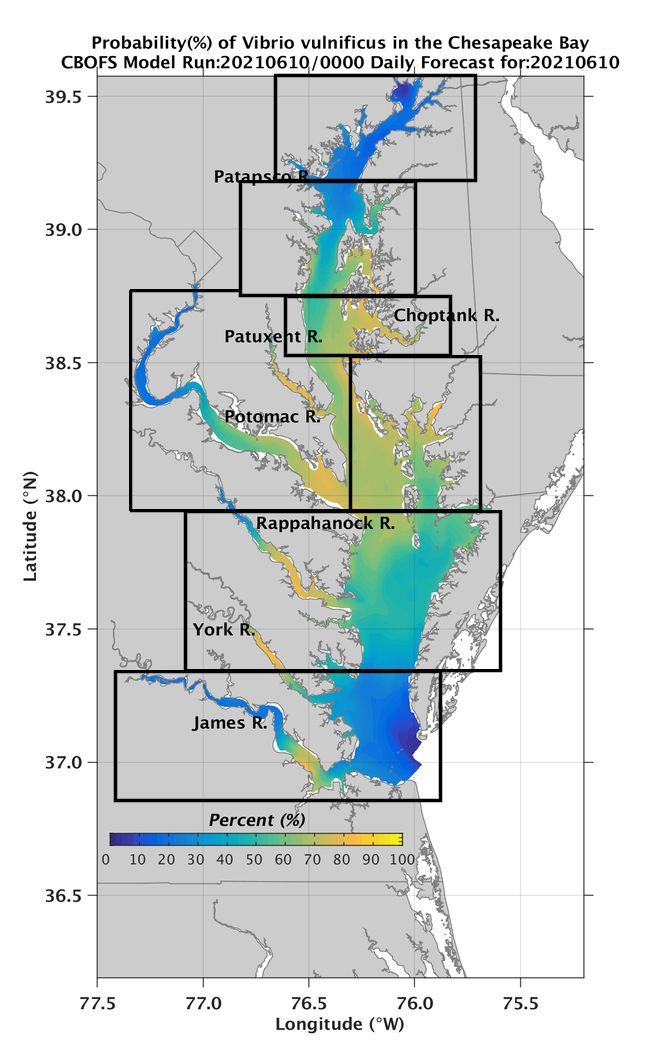
NOAA produces an operational forecast that shows public health officials in Maryland and Virginia when and where the pathogenic Vibrio vulnificus bacteria is most likely to be found in Chesapeake Bay. From now through late summer, the forecast will provide up to a two-day early warning of the probability of occurrence of Vibrio pathogens, enabling state officials to educate the public and reduce the risk of Vibrio infections by taking appropriate measures.
As Chesapeake Bay waters warm, Vibrio vulnificus pathogens become more prevalent. Vibrio spp. are bacteria that occur naturally in our coastal waters, but certain species and strains can be harmful to human health. Some Vibrio species, most notably Vibrio vulnificus, can cause a skin infection when an open wound is exposed to estuarine waters. While cases are extremely rare, guidance models such as this help in proactive management and monitoring of changes in distribution.
NCCOS led development of the model used to generate the forecast, which NOAA’s Center for Operational Oceanographic Products and Services (CO-OPS) helped become operational in November 2018. The operational forecast is available at nowcoast.noaa.gov, under Ecological Forecasts. Daily model guidance for the current day and the following day are available based on average surface temperature and salinity from the NOS Chesapeake Bay Operational Forecast System (CBOFS). Data are also assimilated from the NOAA Chesapeake Bay Office’s Chesapeake Bay Interpretive Buoy System (CBIBS) to ensure model accuracy.
For more information about NCCOS’s Vibrio model and to sign up for related updates and notifications via email, visit NCCOS’s Vibrio Predictive Models webpage.
